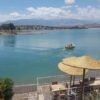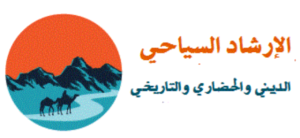Si vous préférez participer à une randonnée organisée dans le Haut Atlas - pour la marche, le vélo ou l'observation des oiseaux - votre meilleur pari au Maroc est Marrakech (voir cette section pour une liste des voyagistes).
Hors de la ville, il existe un nombre surprenant d'entreprises de voyages d'aventure proposant d'excellents itinéraires de trekking dans le Haut Atlas (ainsi que dans les autres chaînes de montagnes et le sous-Sahara). Les voyages durent généralement de cinq à 15 jours et sont souvent à des prix très raisonnables. Voir Tours organisés dans le chapitre S'y rendre et partir pour les opérateurs suggérés en Europe.
Se rendre à Asni et Imlil
There are frequent buses to Asni from Mar- rakesh which leave from the Bab er-Rob when full. They take two hours and cost Dr10. Alternatively, you can take a shared taxi to Asni from the same place. These cost Dr13 per person and take about one hour. From Asni there are fairly frequent trucks to Imlil and you can easily get a lift with them for around Dr15. The journey takes about an hour and the road is fairly rough for much of the way.
There are also taxis from Asni to Imlil, but you’ll have to negotiate a price, as they could be stuck up there for hours waiting for a return fare.
ASNI
The roadside village of Asni is only really worth a stop if you’re around for the large Saturday souq (don’t miss the barbers with their fold-away salons) or in need of a ham- mam after a long dusty trek.
The large numbers of tourists and trav ellers of all types coming through here over the years have turned it into a minor den of iniquity.
Stay overnight if you must, but don’t or- ganise anything that even sounds like a trek. It may have been OK once, but there are now some very cheeky people ripping serious amounts of money off innocent travellers.
If you want to stay the night at Asni there is a youth hostel at the far end of the village, which has clean beds for Dr20 a night. You’ll need your own sleeping bag.
The only other place to stay is the Grand Hôtel du Toubkal (/fax 319203), a pleas- ant three-star hotel with singles, doubles, and triples for Dr169, Dr208 and Dr282 re- spectively, plus The hotel has its own bar, restaurant, swimming pool and guarded parking.
There are several roadside cafes outside the entrance to the market, which serve cheap Moroccan dishes.
Buses and taxis leave here for Bab er- Rob in Marrakesh. You can also pick up the odd bus heading the other way to Ouirgane and Ijoukak
IMLIL
Most trekkers give Asni a miss and stay in this fairly relaxed and attractive Berber vil- lage for the first night.
The area is best known for its walnut trees, but in recent times there has been some diversification, with apples, cherries and other trees being more systematically planted as well.
At the time of writing, the village was ea- gerly awaiting the arrival of electricity and telephone lines. There are no banks in Imlil or Asni.
The heavy rain that caused extensive damage and flooding in the Ourika Valley in August 1995, killing several hundred people, also affected Imlil – two people were killed and several cars and the Cafe Soleil were washed away when water came torrenting into the Mizane River from the mountains.
Hollywood in the High Atlas The acclaimed film director Martin Scorsese recently decided that the snow-capped peaks of the High Atlas looked sufficiently Himalayan to choose the tiny Berber village of Imillas one of the locations for his movie about the Dalal Lama and his flight from Tibet (other scenes were filmed in Ouarzazate). So, for a few days in 1996 the village of Imlil became a remote outpost in the Himalayas. The locals had never seen anything like it. The kasbah on the hill was transformed into a Tibetan temple and a border post (confusing trekkers no end) appeared along the road to Asni. Dozens of trucks rumbled up the main street just after first light. Almost everyone in the village was to be employed in some way or another-even the village mules had jobs to do. By mid-morning the village square was crammed and mingling in the main street were locals in their pointy hooded jellabas, crimson-robed Tibetan monks, soldiers with rifles slung over their shoulders and jade earrings dangling from their ears, Italian wardrobe mis- tresses laden with great piles of heavy winter costumes, puzzled tourists, peak-capped American film crew mumbling into walkie-talkdes, a dozen or more magnificent French horses and somewhere in among them all, Scorsese himself By the end of the day's filming it was difficult to distinguish who was who-actor-monks sat sipping mint tea with locals while villagers rode about with shaved heads, their robes flying. The Dalai Lama would have beamed with delight.
In 1996, Imlil was the scene of more pos itive excitement when Martin Scorcese turned up with a massive film crew to shoot scenes for his movie about the life of the Dalai Lama.
The snow-covered High Atlas doubled as Himalayan peaks and the kasbah on the hill north of the village was made to look like a Tibetan Buddhist temple. The India-Tibet border was halfway down the Imlil road.



